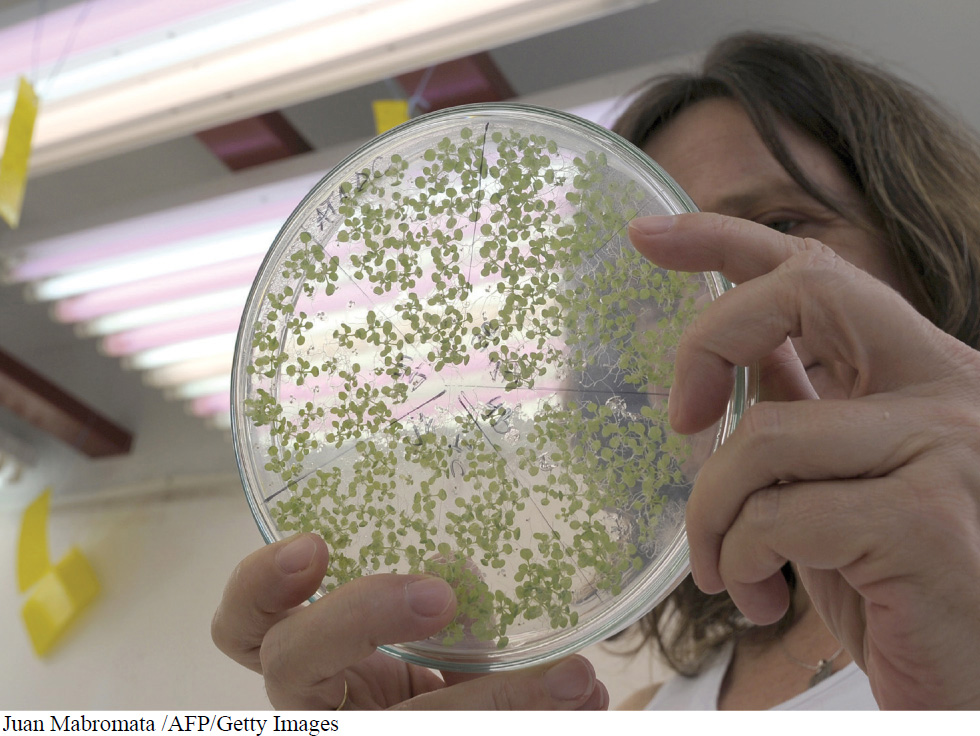
Understanding a phenomenon (such as how DNA is transcribed and translated) is nice, but controlling it can take the satisfaction to an entirely new level. This may explain why there is so much excitement surrounding the field of biotechnology, in which organisms, cells, and their molecules are modified to achieve practical benefits. The modern emphasis in biotechnology is on genetic engineering, the manipulation of organisms’ genetic material by adding, deleting, or transplanting genes from one organism to another.
In the remainder of this chapter, we explore the two primary areas in which biotechnology is applied: agriculture and human health. We begin by introducing the most important tools and techniques used in biotechnology.
How would you create a plant resistant to being eaten by insects? Or a colony of bacteria that can produce human insulin? Although there are many different uses of biotechnology, it employs a surprisingly small number of processes and tools that enable researchers to do the following (FIGURE 5-24):
- 1. Chop up the DNA from a donor organism that exhibits the trait of interest.
- 2. Amplify the small amount of DNA into larger quantities.
- 3. Insert pieces of DNA into bacterial cells or viruses.
- 4. Grow separate colonies of the bacteria or viruses, each of which contains a different inserted piece of donor DNA.
- 5. Identify colonies of bacteria or viruses that have DNA for the trait of interest (and propagate them).

205
To be sure, it’s easier said than done, but these tools capture the essence of most modern biotechnology. Not all of the techniques are used in all biotech applications; nonetheless, they all are mainstays of today’s biotechnology world. Let’s explore each technique in a bit more detail.
Tool 1. Chopping up DNA from a donor organism. To begin, researchers select an organism that has a desirable trait. For example, they might want to produce human growth hormone in large amounts. Their first step would be to obtain a sample of human DNA and cut it into smaller pieces. Cutting DNA into small pieces requires the use of restriction enzymes (FIGURE 5-25).
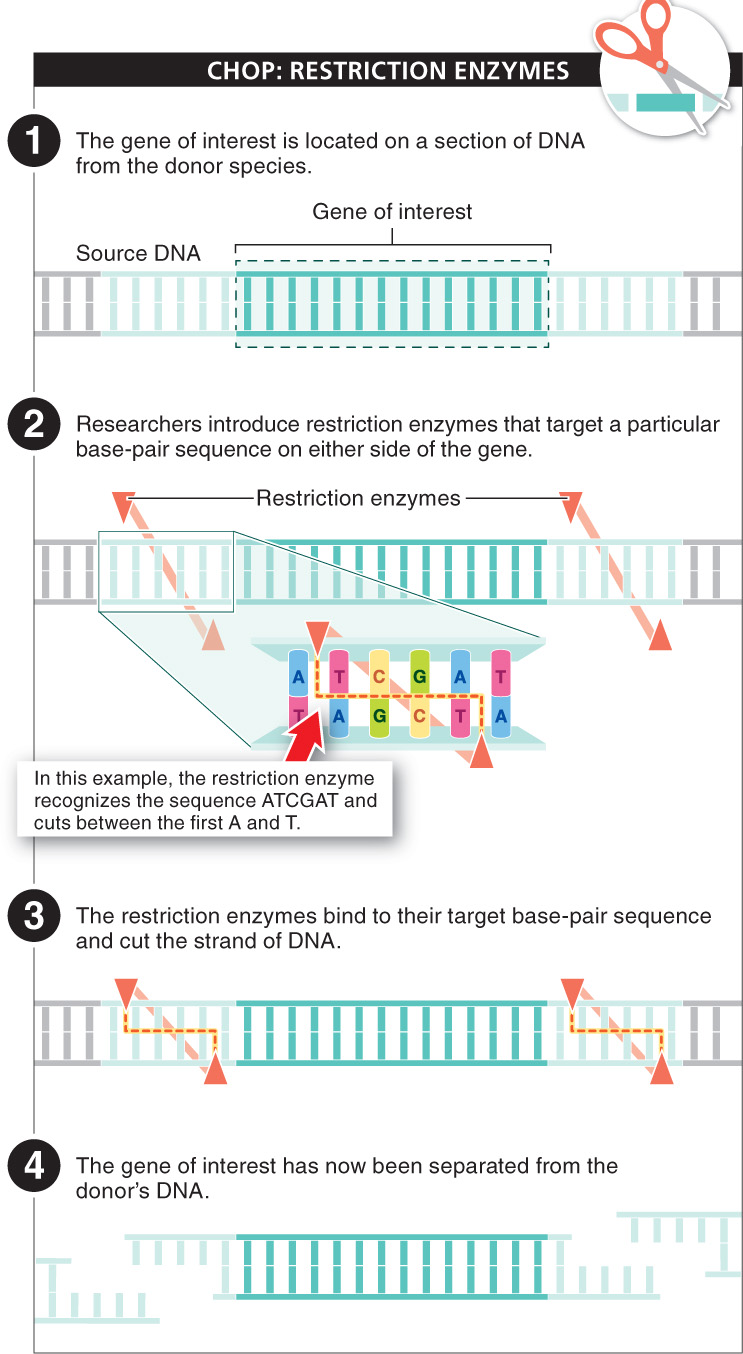
Restriction enzymes have a single function: when they encounter DNA, they cut it into small pieces. These enzymes evolved to protect bacteria from attack by viruses. Upon encountering DNA from an invading virus, a restriction enzyme recognizes and binds to a particular sequence of four to eight bases on the invader’s DNA and cuts there, thus making it impossible for the virus to reproduce within the bacterial cell. Since all DNA has the same basic structure, these enzymes can cut DNA from any source as long as the specific four-
Tool 2. Amplifying DNA pieces into larger quantities. Oftentimes in genetic engineering, only a small sample of donor DNA is taken and chopped up. And in many other situations, only a small amount of DNA is available for analysis or for some other biotechnology use. The polymerase chain reaction (PCR) is a laboratory technique that allows a tiny piece of DNA—
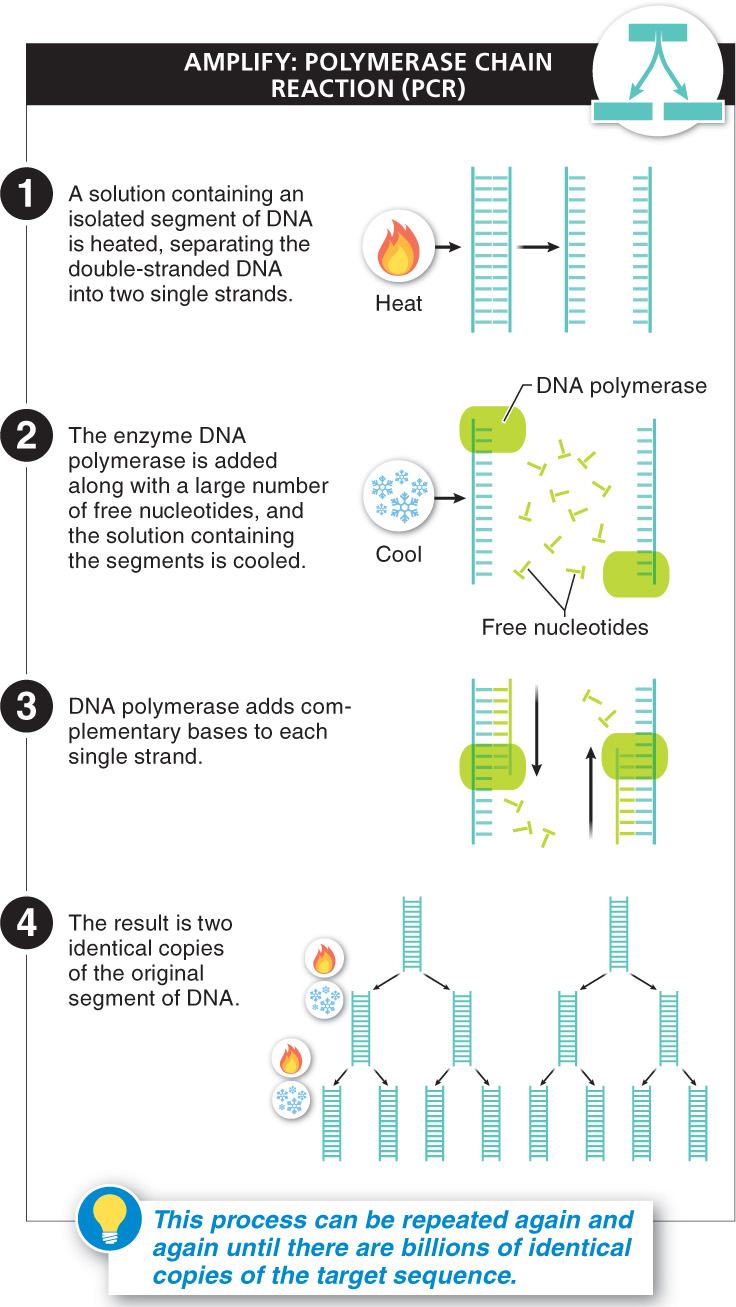
The process involves heating up a solution with the DNA of interest, causing the two strands to separate. Then, in the presence of certain enzymes and plenty of nucleotides floating free in the solution, the DNA is cooled. As it cools, an enzyme matches free nucleotides with their complementary bases on each of the single strands and covalently links these nucleotides together to form a new, complementary, single strand. The result is two complete double-
Tool 3. Inserting foreign DNA into the target organism. In the human growth hormone example mentioned above, the researchers might want to transfer the human growth hormone gene into the bacterium E. coli, creating transgenic organisms.
To create a transgenic organism (that is, an organism with DNA inserted from a different species), researchers must physically deliver the DNA from a donor species into the recipient organism. This delivery often is accomplished using plasmids, circular pieces of DNA that can be incorporated into a bacterium’s genome (FIGURE 5-27). Genes on the plasmid can then be expressed in the bacterial cell and are replicated whenever the cell divides, so both of the new cells contain the plasmid. In some cases, for the delivery process, genes are incorporated into viruses instead of plasmids. The viruses can then be used to infect organisms and transfer the genes of interest into those organisms.
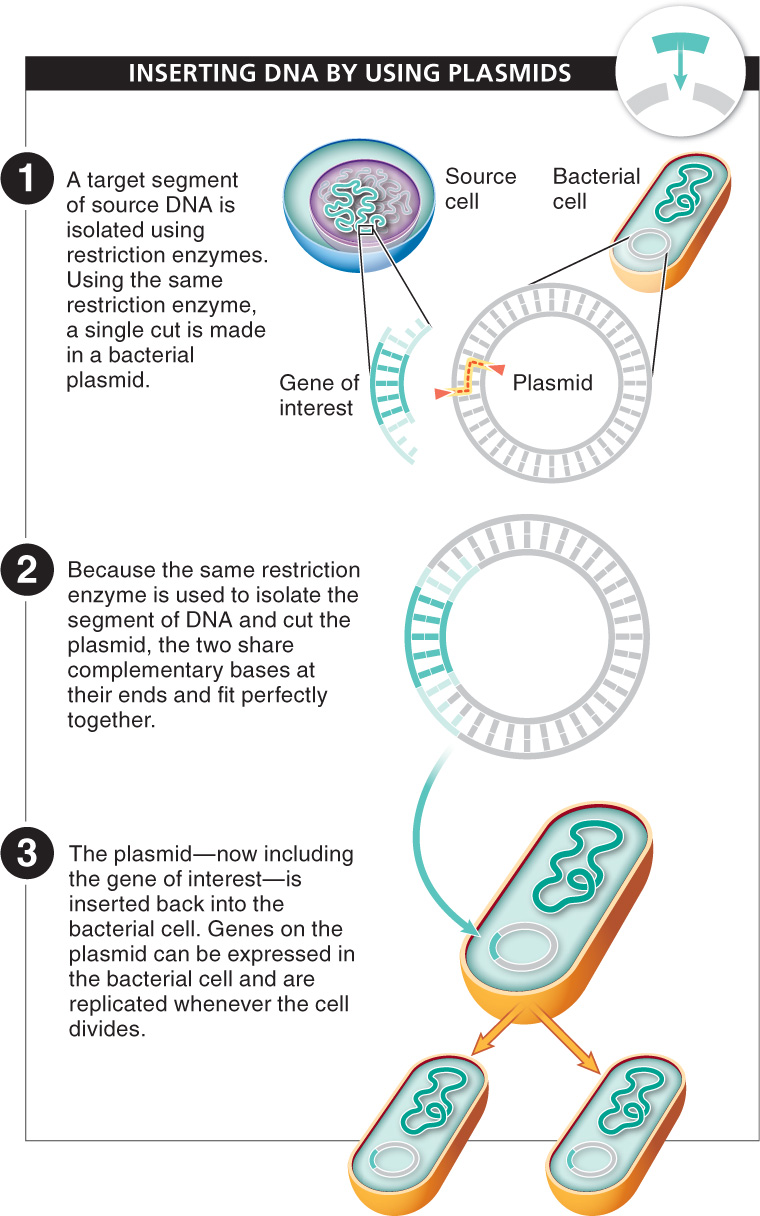
206
Tool 4. Growing bacterial colonies that carry the DNA of interest: cloning. Once a piece of foreign DNA has been transferred to a bacterial cell, every time the bacterium divides, it creates a clone, a genetically identical cell that contains that inserted DNA. The term cloning describes the production of genetically identical cells, organisms, or DNA molecules, a process that occurs each time a bacterium divides. With numerous rounds of cell division, it is possible to produce a huge number of clones, all of which transcribe and translate the gene of interest.
In a typical recombinant DNA experiment—
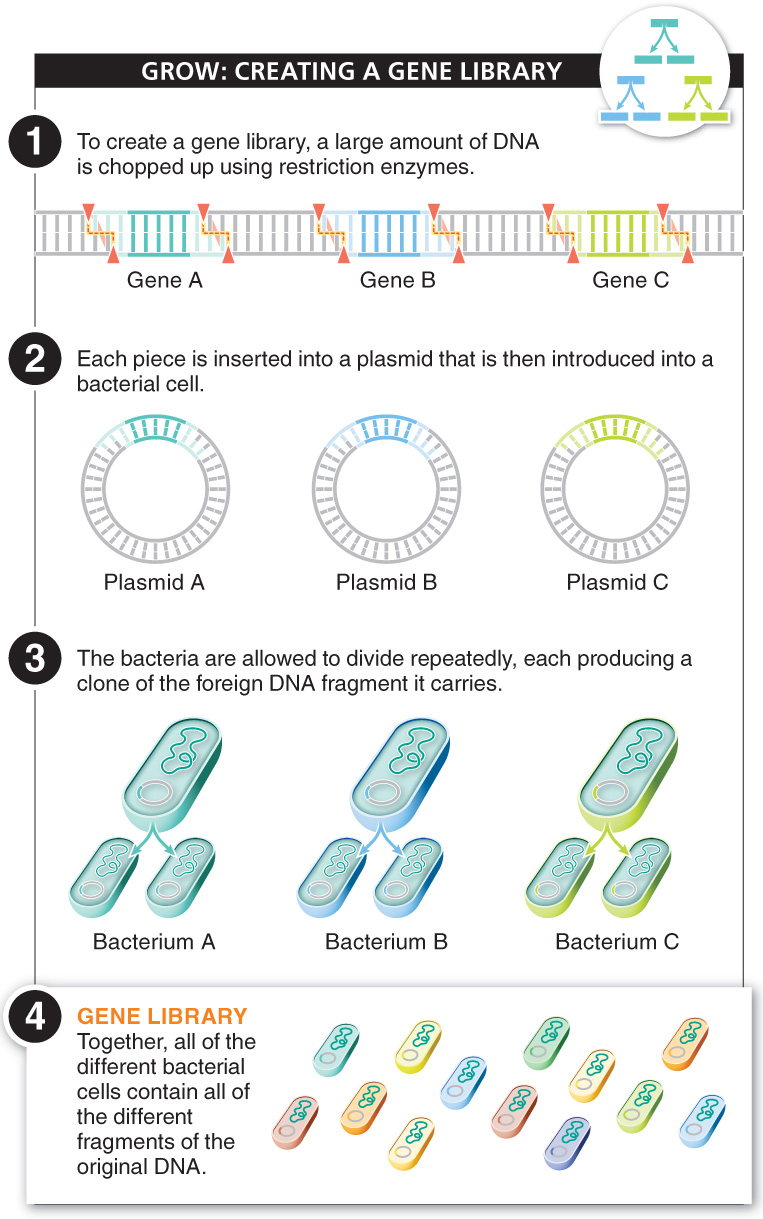
207
Tool 5. Identifying bacterial colonies that have received the gene of interest (and propagating them). Chopping up human DNA and inserting the pieces (each of which carries different genes) into the genomes of bacteria, which divide repeatedly, leads to a large population of bacterial cells, with many carrying useful genetic information. But the information is in no particular order, much like a bookstore in which all the books are uncatalogued and in complete disarray. How can a researcher interested in working with bacterial cells that contain just the one human gene capable of producing human growth hormone identify and separate those bacteria from the other bacteria in the population?
Researchers have developed a way to make the bacteria of interest identify themselves (FIGURE 5-29). First, a chemical is added to the entire population of bacterial cells, separating all the double-
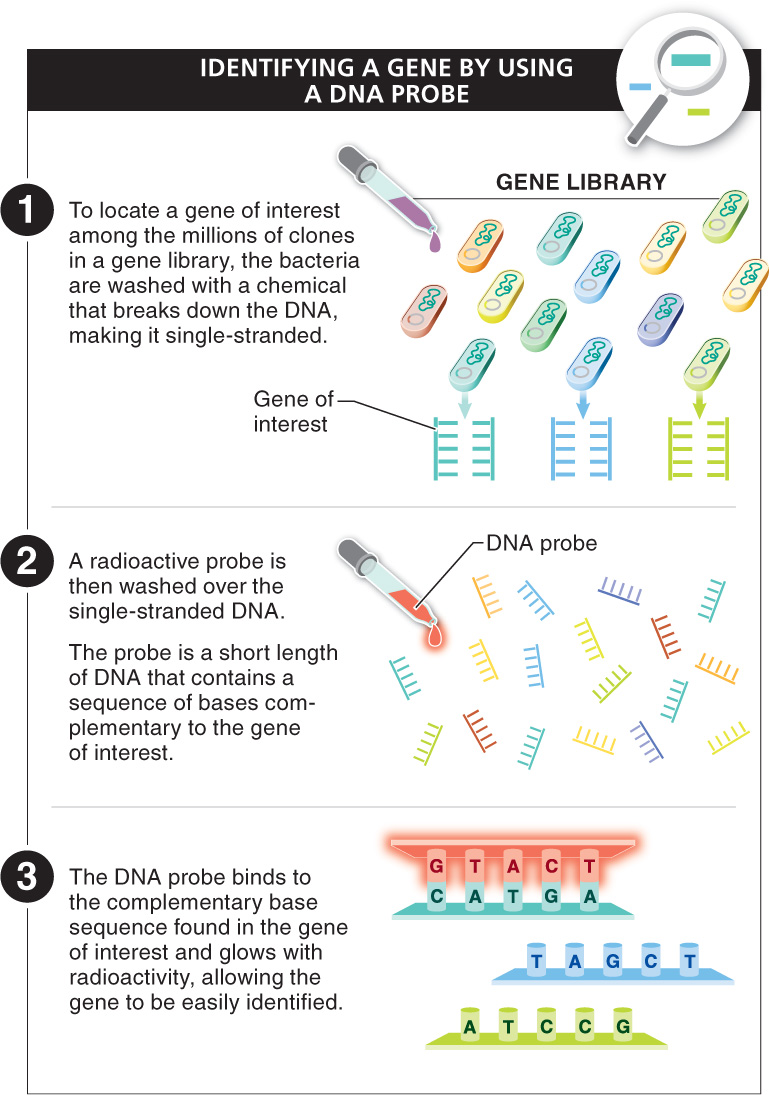
208
We turn next to how these tools and techniques are used to develop products. Keep in mind, however, that the field is still in its infancy.
TAKE-HOME MESSAGE 5.12
Biotechnology is the use of technology to modify organisms, cells, and their molecules to achieve practical benefits. Modern molecular methods make it possible to cut and copy DNA from one organism and deliver it into another. The methods include the use of naturally occurring restriction enzymes for cutting DNA, the polymerase chain reaction for amplifying small amounts of DNA, insertion of the DNA into bacterial or viral vectors, and the cloning and identification of cells with the transferred DNA of interest.
List three main areas of biotech advances in human health or agriculture, and briefly describe how these advancements are made.
The three main areas of biotech advances in human health consist of preventing diseases from occurring, curing diseases, and producing medicines to treat diseases. The three main areas of biotech advances in agriculture consist of creating more nutritious and healthful foods, increasing the efficiency of food production, and reducing the environmental impacts of agriculture. DNA is cut from a donor organism that exhibits the trait of interest, such as resistance to insects. This DNA is amplified and inserted into another organism, not necessarily of the same species.